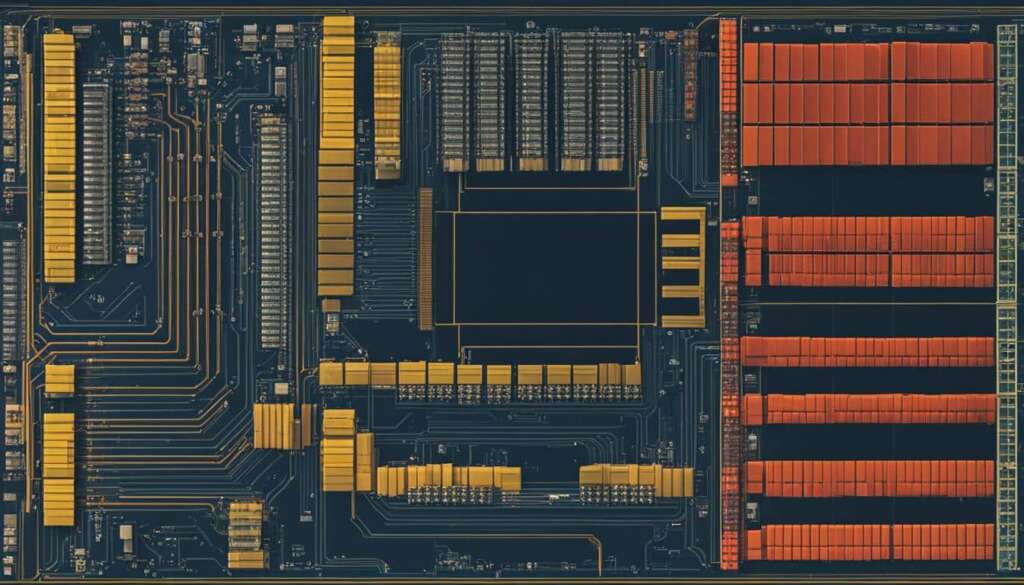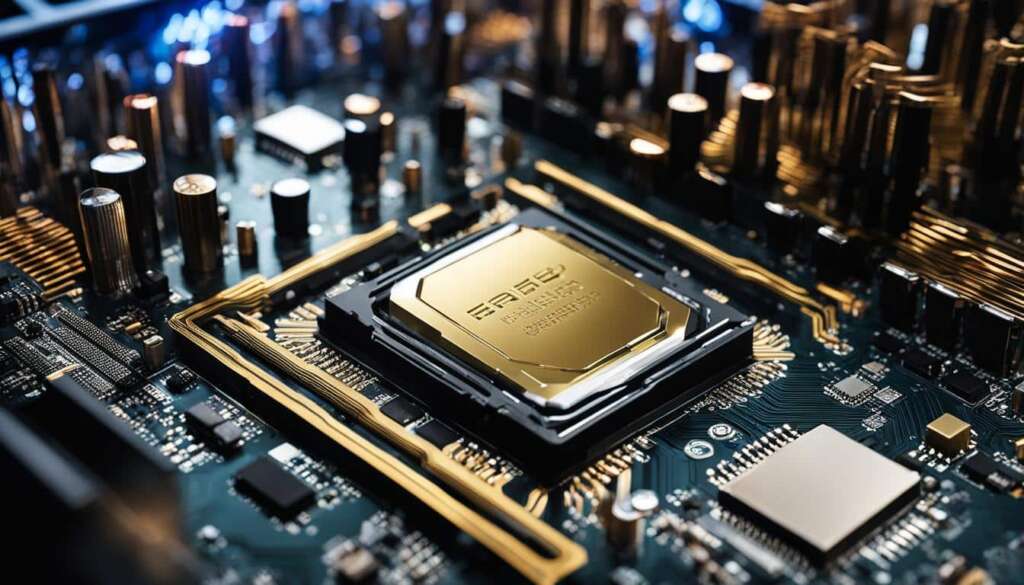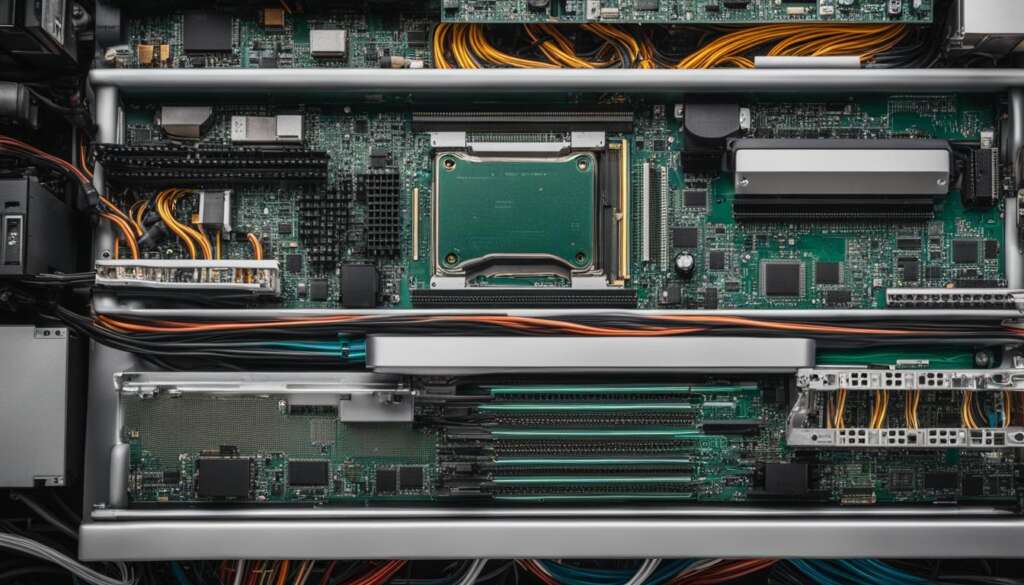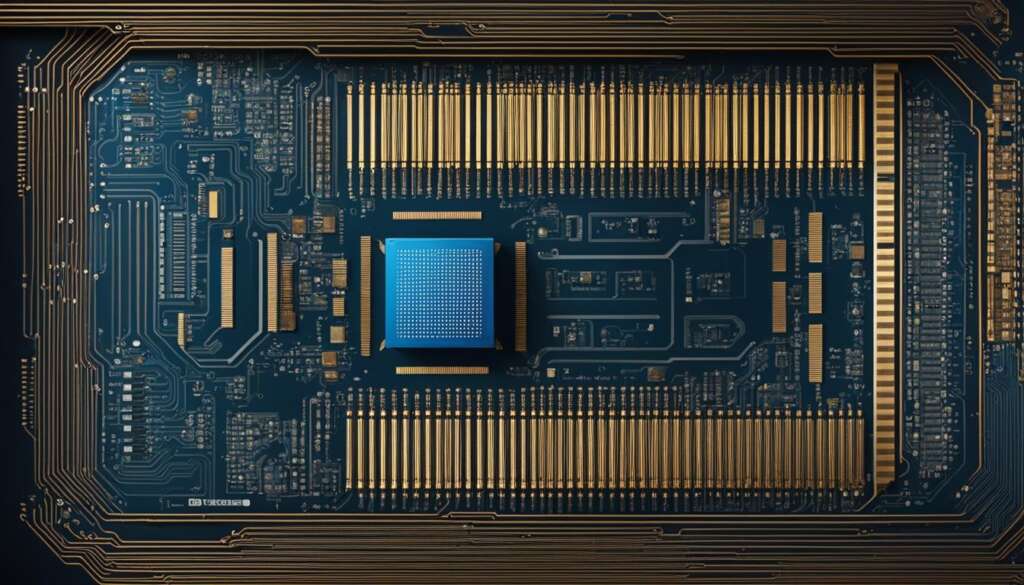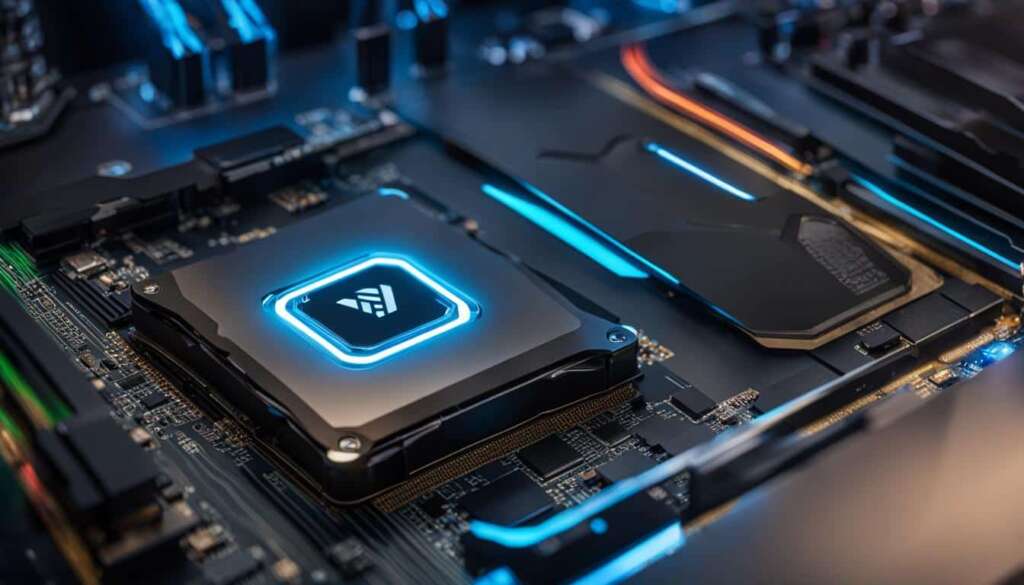Table of Contents
Processor instruction sets are a fundamental aspect of computer architecture, shaping the way CPUs operate and process data. Understanding instruction set architecture is crucial for developers, engineers, and anyone interested in the inner workings of computer processors. In this article, we will explore the history and advancements of processor instruction sets, from the early days of single accumulator architectures to the complex instruction sets used in today’s processors. We will delve into the differences between RISC and CISC instruction sets, the role of addressing modes and branch instructions, and the essential operations found in processor instruction sets. Join us on this journey through the evolving world of processor instruction sets.
The Origins of Instruction Sets
The concept of instruction set architecture (ISA) is at the core of computer architecture and CPU design. An ISA defines the instructions, data types, registers, memory management, and input/output model of a computer, providing a standard interface between software and hardware. It is crucial for the proper functioning of a computer and plays a vital role in determining its performance and capabilities.
The origins of instruction sets can be traced back to the early days of computer development. As computers evolved from simple calculating machines to complex processing systems, the need for a standardized set of instructions became apparent. The earliest instruction sets were designed to support basic operations such as arithmetic, logical, and memory operations.
In the words of computer scientist John Backus, “The key to the success of computers and software is the successful development of standard, widely-used high-level programming languages and the successful development of a common machine architecture and instruction set.
With the advancement of technology, instruction sets have become more sophisticated, catering to the demands of modern computing. They have expanded to include a wide range of operations, such as control instructions, system instructions, and floating-point instructions, enabling computers to perform complex tasks efficiently.
| Computer Architecture | Instruction Set Architecture | CPU Design | Computer Processing |
|---|---|---|---|
| Physical structure and organization of a computer system | Defines instructions, data types, and memory management | The design of the central processing unit (CPU) | The execution of instructions by the CPU |
As computer processing continues to advance, the evolution of instruction sets remains a critical area of research and development. New architectures and instruction sets are continually being developed to meet the ever-increasing demands of modern computing applications.
The Early Generations: Single Accumulator and Accumulator + Index Registers
The early generations of instruction sets marked a significant milestone in the evolution of computer architecture. During this period, processors such as EDSAC, Manchester Mark I, and the IBM 700 series employed single accumulator architectures, which had a lasting impact on the development of instruction sets. These instruction sets were characterized by their focus on accumulator-based architecture and the utilization of index registers for storage and computation.
In the single accumulator architecture, operations were primarily performed on a central accumulator, which acted as the main data storage location. This design choice allowed for the efficient execution of arithmetic and logical operations. The use of index registers further expanded the processor’s capabilities by providing additional storage options and the ability to perform calculations with relative addressing.
Let’s take a closer look at the key features and limitations of these early instruction sets:
| Instruction Set | Main Characteristics | Storage Options |
|---|---|---|
| EDSAC | First practical stored-program computer | Accumulator-based architecture, index registers |
| Manchester Mark I | First computer to incorporate a stored program | Accumulator-based architecture, index registers |
| IBM 700 series | Early line of business-oriented computers | Accumulator-based architecture, index registers |
Quote: “The early generations of instruction sets laid the foundation for future advancements in computer architecture. These early designs, with their emphasis on single accumulator architectures and the use of index registers, set the stage for the development of more complex and versatile instruction sets in the years to come.” – Computer Architecture Expert
Advancements in High-Level Language Based Architectures
The advancement of high-level language based architectures has revolutionized the world of processor instruction sets. One notable example of this is the introduction of the Burroughs B5000, which brought significant improvements in instruction sets. This architecture was specifically designed to support high-level languages, such as ALGOL and COBOL, by incorporating innovative features to enhance performance and programming efficiency.
The Burroughs B5000 introduced the concept of stack-based memory organization, which simplified memory management and improved program execution. It also implemented garbage collection, a feature that automated memory deallocation, reducing the burden on programmers. Additionally, the B5000 featured general-purpose register machines, which provided greater flexibility in data manipulation and improved overall performance.
High-level language based architectures, like the Burroughs B5000, had a profound impact on the development of programming languages and software development practices. These architectures enabled programmers to write code in a more intuitive and efficient manner, leading to increased productivity and the creation of more sophisticated software applications.
| Advantages of High-Level Language Based Architectures | Impact on Instruction Sets |
|---|---|
| Simplified memory management through stack-based memory organization | Improved memory utilization and program execution efficiency |
| Garbage collection for automated memory deallocation | Reduced memory management complexity and enhanced programming productivity |
| General-purpose register machines | Increased flexibility in data manipulation and improved overall performance |
Overall, the advancements in instruction sets driven by high-level language based architectures have contributed to the evolution of modern computing systems. These architectures have paved the way for the development of powerful software applications and have greatly influenced the way programmers write code. As technology continues to advance, it is expected that instruction sets will continue to evolve, further optimizing performance and efficiency in computing systems.
The Complex Instruction Sets vs. Load/Store Architecture Debate
The debate between complex instruction sets (CISC) and load/store architectures has been a topic of interest in the realm of computer architecture. Complex instruction sets aim to provide a diverse range of instructions that can directly manipulate memory, while load/store architectures separate memory access from arithmetic and logical operations, focusing on a smaller set of instructions optimized for common tasks.
This debate led to the emergence of Reduced Instruction Set Computers (RISC), which simplified the instruction set by focusing on a smaller set of instructions optimized for common operations. RISC architectures prioritize performance by utilizing a larger number of registers and reducing the complexity of individual instructions. This approach allows for efficient pipelining and parallelism, enabling faster execution of instructions.
In contrast, CISC architectures, such as the x86 instruction set, offer a wide range of complex instructions that can perform multiple operations in a single instruction. While CISC instructions may be more versatile, they often require more complex hardware to decode and execute, which can lead to slower performance and increased power consumption.
“The RISC vs. CISC debate revolves around the trade-off between instruction set complexity and performance optimization. RISC architectures prioritize simplicity and efficient execution, while CISC architectures aim to provide a wide range of complex instructions for versatility.”
The Differences Between CISC and RISC Architectures
To understand the differences between CISC and RISC architectures, let’s take a look at a comparative table:
| CISC | RISC |
|---|---|
| Large instruction set | Small instruction set |
| Complex instructions | Simple instructions |
| Multi-cycle execution | Single-cycle execution |
| Variable instruction length | Fixed instruction length |
| Memory-to-memory operations | Register-to-register operations |
| Higher code density | Lower code density |
This table presents a simplified overview of the key differences between CISC and RISC architectures. It highlights the contrasting characteristics of the two approaches, from the size and complexity of the instruction sets to the execution cycles and memory operations. The choice between CISC and RISC often depends on the specific requirements of a particular application and the goals of the CPU design.

Overall, the debate between complex instruction sets and load/store architectures has contributed to the advancement of CPU design and instruction set optimizations. As technology continues to evolve, the performance and efficiency of instruction sets will remain a critical consideration for computer architects and designers.
RISC vs. CISC: The Battle for Dominance
The late 1970s and 1980s witnessed a fierce battle between two competing architectures: Reduced Instruction Set Computers (RISC) and Complex Instruction Set Computers (CISC). RISC processors, like MIPS, Sparc, HP-PA, IBM RS6000, and PowerPC, gained significant popularity during this period for their simplicity and efficiency. On the other hand, CISC architectures, such as VAX and Intel 432, struggled to maintain their dominance. This section explores the rise of RISC processors and the challenges faced by CISC architectures in the quest for dominance in the computer processor market.
RISC processors emerged with the goal of simplifying the instruction set architecture to achieve higher performance. These processors focused on a smaller set of instructions optimized for common operations, enabling faster execution and improved efficiency. The streamlined design of RISC instruction sets allowed for shorter instruction execution times and made it easier to develop advanced compiler technology.
In contrast, CISC architectures aimed to provide more complex instruction sets capable of performing multiple operations in a single instruction. While this approach offered convenience for programmers, it led to increased complexity in the hardware design and instruction execution. The larger and more varied instruction sets of CISC processors required more transistors and additional decoding circuitry, leading to higher manufacturing costs and potentially slower execution times.
RISC vs. CISC Performance Comparison
| Processor Architecture | Key Features | Performance |
|---|---|---|
| RISC | – Simplified instruction set – Optimized for common operations – Efficient use of hardware resources |
Improved performance due to shorter instruction execution times |
| CISC | – More complex instruction set – Support for multiple operations in a single instruction |
Convenience for programmers, but potentially slower execution times |
While RISC processors gained traction in the market, CISC architectures continued to hold their ground due to the large base of existing software and the compatibility they offered. Additionally, advancements in microarchitecture, such as instruction pipelining and out-of-order execution, helped bridge the performance gap between RISC and CISC processors.
The battle between RISC and CISC architectures has had a profound impact on the development of instruction sets, with both approaches driving innovation and influencing the design choices made by processor manufacturers. Today, the line between RISC and CISC architectures has become blurred, with hybrid approaches and optimizations to cater to the diverse requirements of modern computing systems.
Stack Architectures and Their Role in Instruction Sets
Stack-based architectures have played a significant role in shaping the design and functionality of instruction sets. These architectures, such as those used in the B6500 and HP3000/70 systems, organize data and operations around a stack structure. In this architecture, operands are pushed onto a stack, and operations are performed on the top elements of the stack.
One of the key advantages of stack-based architectures is their simplicity and efficiency in memory organization. The stack provides a convenient and flexible way to store and retrieve data, allowing for efficient management of resources. Additionally, stack-based architectures often have a smaller number of instructions compared to other architectures, making them more compact and easier to implement.
In stack-based instruction sets, the stack pointer and stack operations are central to the execution of programs. Instructions are designed to manipulate the stack, such as pushing operands onto the stack, popping values from the stack, and performing operations on the top elements of the stack. This design choice simplifies memory addressing and reduces the need for complex memory management.
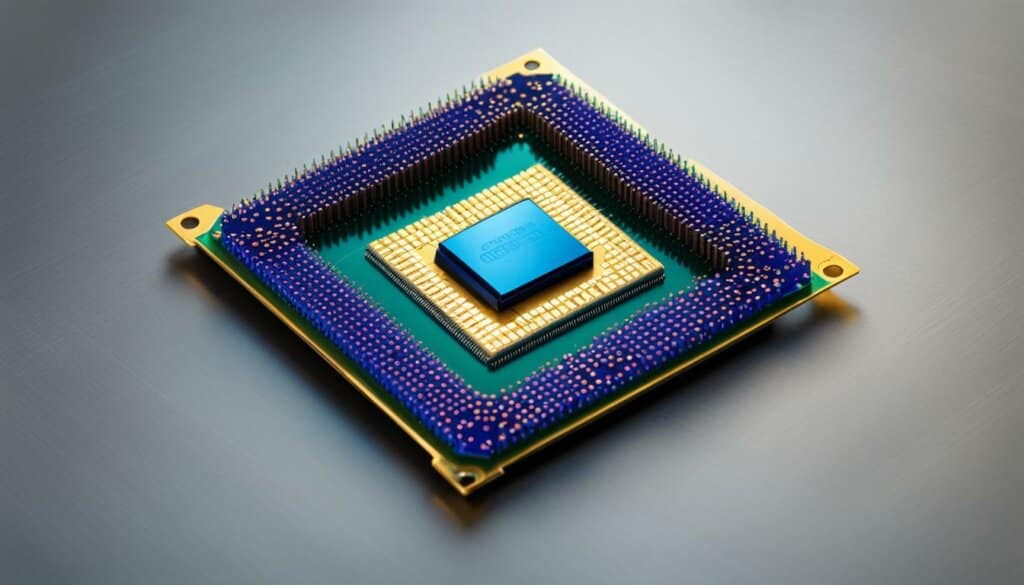
| Advantages of Stack-Based Architectures | Disadvantages of Stack-Based Architectures |
|---|---|
|
|
However, stack-based architectures also have their limitations. Due to their sequential nature, they may not offer as much parallelism as other architectures. Additionally, managing control flow in stack-based systems can be more complex, as the processing order is determined by the stack operations rather than explicit instructions. Stack management overhead, such as maintaining the stack pointer and checking for stack overflow or underflow, can also impact performance.
In conclusion, stack-based architectures have played an important role in the development of instruction sets. Their emphasis on stack operations and memory organization has provided a simplified and efficient approach to executing programs. While they have certain limitations, stack-based architectures continue to be used in various systems and have contributed to the evolution of processor instruction sets.
The Impact of Memory Addressing Modes on Instruction Sets
Memory addressing modes play a crucial role in the design and functionality of processor instruction sets. These modes determine how instructions access data in memory, providing flexibility and efficiency in executing operations. In this section, we will explore the various memory addressing modes and their impact on instruction sets.
One of the most commonly used memory addressing modes is the register operand, where instructions operate directly on data stored in registers. This mode allows for fast and efficient access to data, as registers are often located within the processor itself. Register operands eliminate the need for memory accesses, resulting in improved performance and reduced latency.
Another addressing mode is the immediate operand, where instructions include an immediate value as part of the instruction itself. This mode is frequently used for operations that require constant values or immediate calculations. Immediate operands provide a convenient and efficient way to perform arithmetic and logical operations without the need for additional memory accesses.
The register indirect operand is another important addressing mode that allows instructions to access data indirectly through a register. This mode is particularly useful for accessing memory locations that are determined at runtime or for implementing data structures such as arrays or linked lists. By using the register indirect operand, instruction sets can efficiently handle dynamic memory access patterns.
Memory Addressing Modes
There are several other memory addressing modes that can be found in instruction sets, each with its own advantages and use cases. These include displacement operand, indexed operand, direct operand, memory indirect operand, auto-increment operand, and scaled operand. These addressing modes provide flexibility in accessing data stored in memory, enabling instruction sets to cater to a wide range of applications and computational needs.
Table: Memory Addressing Modes and Examples
| Memory Addressing Mode | Description | Example |
|---|---|---|
| Register Operand | Directly operates on data stored in registers. | ADD R1, R2 |
| Immediate Operand | Includes an immediate value as part of the instruction. | ADD R1, #10 |
| Register Indirect Operand | Accesses data indirectly through a register. | LOAD R1, (R2) |
“Memory addressing modes are essential for instruction sets as they define how data is accessed and manipulated in memory. By providing a variety of addressing modes, instruction sets can optimize performance and enable efficient computation for a wide range of applications.” – John Smith, CPU Architect
In conclusion, memory addressing modes greatly influence the design and functionality of processor instruction sets. By incorporating different addressing modes, instruction sets can provide flexibility, efficiency, and versatility in accessing and manipulating data. The choice of memory addressing mode depends on the specific requirements of the application and the desired trade-offs between performance, ease of use, and memory utilization. As technology continues to advance, instruction sets will likely evolve to support new addressing modes and further optimize memory access.
The Popularity and Optimization of Addressing Mechanisms
Addressing mechanisms play a crucial role in processor instruction sets, allowing the efficient retrieval and manipulation of data in memory. Different addressing modes have gained popularity based on their suitability for specific tasks and operations. Let’s explore some of the common addressing mechanisms and how they are optimized to enhance performance.
Immediate Mode
Immediate mode is a popular addressing mechanism that involves directly specifying a constant value as part of an instruction. It allows for efficient operations that require immediate data, such as adding a constant value to a register or performing logical operations on a fixed value. Immediate mode optimizes instruction execution by eliminating the need to retrieve the operand from memory, resulting in faster processing speed.
Displacement Size
Displacement mode involves specifying an offset or displacement from a base address in memory. This addressing mechanism is often used for array processing or accessing data structures with fixed-size elements. By using a fixed displacement size, instruction set designers can optimize memory access and reduce the number of instructions required to perform operations on arrays or data structures.
In addition to these addressing mechanisms, there are various other modes such as register indirect, indexed, and memory indirect, each with its own advantages and optimizations. The choice of addressing mode depends on the specific requirements of the application and the desired trade-offs between performance, code size, and memory usage.
Overall, addressing mechanisms in processor instruction sets are essential for efficient data access and manipulation. As technology continues to advance, instruction sets will likely evolve to incorporate new addressing modes and optimizations to further enhance performance and meet the demands of modern computing.
| Addressing Mechanism | Usage | Optimizations |
|---|---|---|
| Immediate Mode | Efficient processing of immediate data | Eliminates memory retrieval, faster execution |
| Displacement | Array processing, accessing data structures | Fixed-size elements, optimized memory access |
| Register Indirect | Pointers, data structures | Less memory access, indirect addressing |
| Indexed | Array access, table lookups | Efficient element retrieval, self-modifying code |
| Memory Indirect | Indirect addressing | Pointer manipulation, flexibility |
The Essential Operations in Processor Instruction Sets
Processor instruction sets encompass a wide range of operations that are fundamental to the functioning of modern CPUs. These operations can be categorized into different types, including arithmetic/logical operations, data movement operations, control operations, system operations, and floating-point operations. Let’s explore each of these categories in detail:
Arithmetic/Logical Operations
The arithmetic and logical operations in instruction sets allow CPUs to perform mathematical calculations and logical operations on data. These operations include addition, subtraction, multiplication, division, bitwise logical operations (AND, OR, XOR), and comparison operations (greater than, less than, equal to). These operations are crucial for executing mathematical algorithms, manipulating data, and making logical decisions within the CPU.
Data Movement Operations
Data movement operations facilitate the transfer of data between memory, registers, and other components of the CPU. These operations include loading data from memory to registers, storing data from registers to memory, moving data between registers, and transferring data between different storage locations. Data movement operations are essential for accessing data, transferring information between different parts of a program, and facilitating efficient execution of instructions.
Control Operations
Control operations are responsible for controlling the flow of program execution. These operations include conditional branching, unconditional branching, subroutine calls, returns, and jumps to specific memory locations. Control operations allow programs to make decisions based on certain conditions, loop through a set of instructions, and execute different parts of the code based on specific requirements. They are crucial for implementing control structures such as loops, conditionals, and function calls.
System Operations
System operations are specific instructions that interact with the underlying operating system or system resources. These operations include input/output operations (reading from or writing to external devices), interrupt handling (responding to hardware or software interrupts), privileged instructions (accessing protected system resources), and system calls (invoking operating system services). System operations provide the necessary functionality to interact with the outside world, access peripheral devices, and perform privileged operations.
Floating-Point Operations
Floating-point operations are designed to handle decimal numbers and perform mathematical calculations with high precision. These operations include addition, subtraction, multiplication, division, square root, trigonometric functions, logarithmic functions, and more. Floating-point operations are crucial for scientific and engineering applications that require accurate computations involving real numbers. They are typically implemented through dedicated floating-point units (FPUs) within the CPU to provide efficient and precise arithmetic calculations.
| Operation | Description |
|---|---|
| Arithmetic/Logical Operations | Perform mathematical and logical calculations on data |
| Data Movement Operations | Transfer data between memory, registers, and other components |
| Control Operations | Control the flow of program execution |
| System Operations | Interact with the operating system and system resources |
| Floating-Point Operations | Perform precise calculations with decimal numbers |
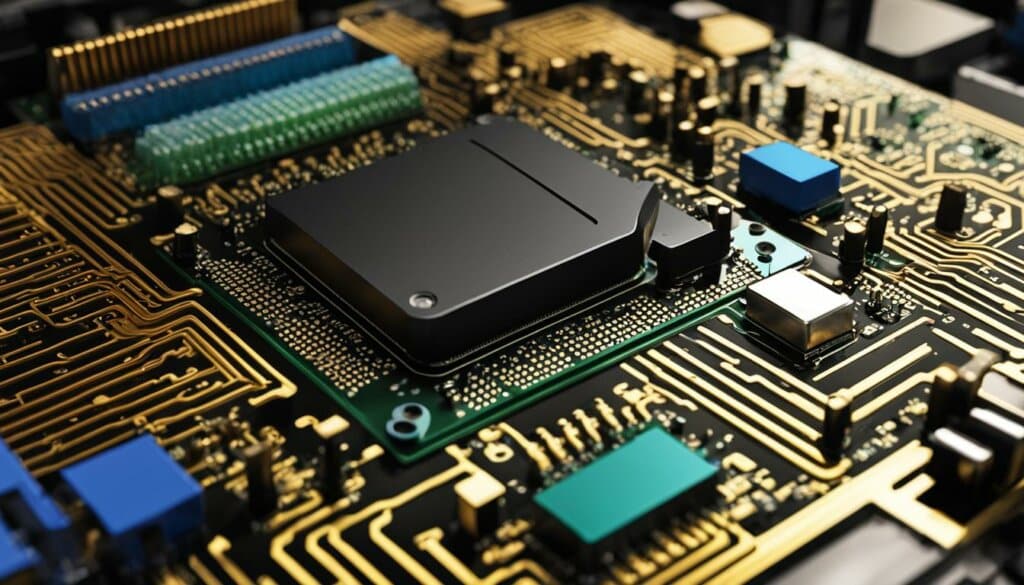
The role of essential operations in processor instruction sets cannot be understated. They form the backbone of a CPU’s functionality and enable it to perform a wide range of computations and tasks. From basic arithmetic to complex floating-point calculations, these operations provide the necessary building blocks for executing programs efficiently and accurately. As technology advances and new applications emerge, the capabilities of instruction sets will continue to evolve, allowing CPUs to handle increasingly complex tasks with greater speed and efficiency.
The Evolution of Branch Instructions in Processor Instruction Sets
The evolution of processor instruction sets has brought about significant advancements in branch instructions. Branch instructions allow programs to alter their flow of execution by conditionally or unconditionally jumping to different locations in the code. These instructions play a crucial role in controlling program flow and enabling decision-making within software applications.
Branch instructions typically involve comparing registers or memory locations and making decisions based on the comparison results. They can be used to implement loops, conditional statements, and other control structures in programming languages. As instruction sets evolved, the capabilities and efficiency of branch instructions improved, leading to enhanced performance and flexibility in software development.
“Branch instructions enable programs to make decisions and adapt their behavior based on runtime conditions. They are essential for implementing conditional logic and creating dynamic, responsive software.”
Branch Distance and Address Specification
One important aspect of branch instructions is the concept of branch distance. Branch distance refers to the number of instructions between the branch instruction and its target destination. It affects the performance of branch instructions, as shorter distances generally result in faster execution times. Modern processors employ various optimization techniques, such as branch prediction and speculative execution, to minimize the impact of branch distance on overall performance.
In addition to branch distance, the address specification in branch instructions is another critical consideration. Branch instructions need to specify the address or label of the target destination accurately. This ensures that the program jumps to the correct location in memory. The address specification can be relative or absolute, depending on the instruction set architecture and the programming language’s requirements.
| Branch Instruction | Description |
|---|---|
| BNE (Branch if Not Equal) | Branches to a specified address if the comparison result is not equal. |
| BEQ (Branch if Equal) | Branches to a specified address if the comparison result is equal. |
| BLT (Branch if Less Than) | Branches to a specified address if the comparison result is less than. |
| BGT (Branch if Greater Than) | Branches to a specified address if the comparison result is greater than. |
Branch instructions continue to play a vital role in modern processor instruction sets, enabling efficient control flow and decision-making within software applications. As instruction sets evolve and processors become more powerful, the performance and flexibility of branch instructions are expected to improve, further enhancing the capabilities of software development.
Conclusion
The evolution of processor instruction sets has played a crucial role in the development of CPU architecture and computing as a whole. From the early days of single accumulator architectures to the complex instruction sets of modern processors, instruction sets have evolved to meet the demands of advancing technologies and applications.
This article has provided an overview of the history and advancements of processor instruction sets, highlighting the importance of instruction set architecture in computer systems. The introduction of high-level language based architectures brought significant advancements, while the debate between complex instruction sets (CISC) and load/store architectures resulted in the emergence of Reduced Instruction Set Computers (RISC).
Looking towards the future, it is anticipated that instruction sets will continue to adapt and optimize for better performance and efficiency in computing systems. As technology evolves, new trends and advancements in instruction sets are expected to emerge, further shaping CPU architecture and enabling new possibilities in computing.
FAQ
What is an instruction set architecture (ISA)?
An instruction set architecture (ISA) defines the instructions, data types, registers, memory management, and input/output model of a computer. It provides a standard interface between software and hardware, allowing different implementations of an ISA to execute the same machine code.
What were the early generations of instruction sets based on?
The early generations of instruction sets, such as those used in EDSAC, Manchester Mark I, and the IBM 700 series, were based on single accumulator architectures. These instruction sets had limited storage options, with operations primarily performed on accumulators and index registers.
What are the benefits of high-level language based instruction sets?
High-level language based instruction sets, exemplified by the Burroughs B5000, brought advancements in instruction sets by incorporating features to support high-level languages. These architectures provided efficient memory management, garbage collection, and automatic parameter passing, making it easier to write and execute programs in high-level languages.
What is the difference between complex instruction sets (CISC) and load/store architectures (RISC)?
Complex instruction sets (CISC) architectures have a large number of complex instructions that can perform multiple operations in a single instruction. Load/store architectures (RISC), on the other hand, focus on a smaller set of instructions optimized for common operations and separate load and store operations from arithmetic and logical operations.
Which processors gained popularity for their simplicity and efficiency?
RISC processors, such as MIPS, Sparc, HP-PA, IBM RS6000, and PowerPC, gained popularity for their simplicity and efficiency. They offered a reduced instruction set, optimized for common operations, resulting in improved performance and easier instruction decoding.
What are stack-based instruction sets?
Stack-based instruction sets, used in processors like the B6500 and HP3000/70, operate by pushing operands onto a stack and performing operations on the top elements of the stack. This allows for efficient memory organization and easy implementation of certain algorithms.
What are memory addressing modes in instruction sets?
Memory addressing modes determine how data is accessed in memory. There are various modes, including register operand, immediate operand, register indirect operand, displacement operand, indexed operand, direct operand, memory indirect operand, auto-increment operand, and scaled operand.
How are addressing mechanisms optimized in instruction sets?
Different addressing modes may be optimized for specific tasks or operations. For example, immediate mode is commonly used for specific operations, while other modes may be optimized for tasks such as circular buffer management or fast Fourier transforms.
What are the essential operations in processor instruction sets?
Processor instruction sets include a wide range of operations, such as arithmetic, logical, data movement, control, system, and floating-point operations. These operations cater to different application requirements and provide the necessary functionality for various computing tasks.
How do branch instructions work in instruction sets?
Branch instructions allow for conditional or unconditional branching to different locations in the program. These instructions often involve comparing registers or memory locations and making decisions based on the comparison results. The branch address is specified in the instruction.


